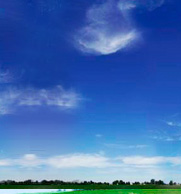Risks of deadly heat stroke to millions of Hajj and Umrah pilgrims during summer could be halved if global warming is limited to 1.5°C as stipulated in the Paris climate accord compared with 2°C, according to a new study published today in journal Environmental Research Letters.
The study, led by scientists from Climate Analytics, an international climate science and policy institute, is first to show that just half a degree of extra warming between 1.5°C and 2°C makes a big difference in terms of heat stress risk posed to Muslims carrying out religious rites in Saudi Arabia during summer, where the mercury frequently climbs over 45°C even now.
Using the so-called wet bulb temperature as an indicator of heat stress, which takes into account temperature and humidity and is routinely used to measure human discomfort, the study evaluates how frequently heat would exceed dangerous and extremely dangerous thresholds over five-day periods during summer months.
"We found that the intensity of five-day stretches of high wet-bulb temperatures, which expose pilgrims heading for the holy site of Mecca in Saudi Arabia in summer to a heightened risk of dangerous heat stress, would be twice as high as today if global warming reaches 2°C by the end of this century. Limiting warming to 1.5°C, as governments pledged to do in the Paris Agreement, would cut this risk in half," said Dr Fahad Saeed from Climate Analytics, lead author of the study.
Hajj is one of the five pillars of Islam and is considered obligatory at least once in a lifetime for all adults Muslims, who are financially and physically capable of undertaking it. Around 2 million people attend the annual five-day pilgrimage to Mecca. Saudi Arabia expects this number to rise to 4.5 million by the end of the decade.
The Umrah, a minor pilgrimage, can be carried out any time during the year but many Muslims prefer to perform it during the Ramadan period. Approximately 7 million pilgrims visited Mecca during Ramadan in recent years. This number is also expected to rise significantly.
Outside physical activities, which are part of both rituals, including long treks on foot over challenging terrain, sleeping in tents, and extended periods in confined places among large crowds make pilgrims susceptible to heat stress.
The study uses U.S. National Weather Service (USNWS) criteria, which define 'dangerous' and 'extremely dangerous' thresholds as 24.6°C and 29.1°C respectively.
The researchers find that five-day periods that exceed the extremely dangerous threshold are most likely to occur in September. The probability of exceeding this threshold during this month would be four times more likely in a world that is 1.5°C warmer than pre-industrial levels, and as much as 13 times more likely, should global warming reach 2°C.
The researchers also find that the risk of life-threatening heat stroke during these extremely dangerous hot periods in August and September would be twice as high at 2°C of warming compared with 1.5°C. "Even if the most severe heat stress related risks for pilgrims can be alleviated by adaptation measures, those measures will most likely still alter the nature of the centuries' old religious rites performed during the Hajj - a major loss for all people of the Muslim faith, but also for all humankind," said Dr Carl-Friedrich Schleussner from Climate Analytics, co-author of the study.
Because the dates of Islamic religious rites are determined by the lunar calendar, the Hajj will take place during summer in three different decades over the course of the 21st century, including the current one.
"While increasingly extreme summer conditions already pose a severe danger to pilgrims visiting Mecca today, the significant difference in life-threatening heat stroke risks between 1.5°C and 2°C warming, which we have identified in our study, will manifest during the next summer Hajj, which will span from 2047 onwards" said study co-author Prof. Mansour Almazroui from the Center of Excellence for Climate Change Research/Department of Meteorology, King-Abdulaziz University in Saudi Arabia.
"Our study underscores the importance of stringent emissions reductions to limit global warming to 1.5°C to protect people as much as possible from life-threatening impacts as much as possible, and to minimise the damage to one of the central pillars of the Muslim religion," Almazroui said.




 Română
Română English
English


